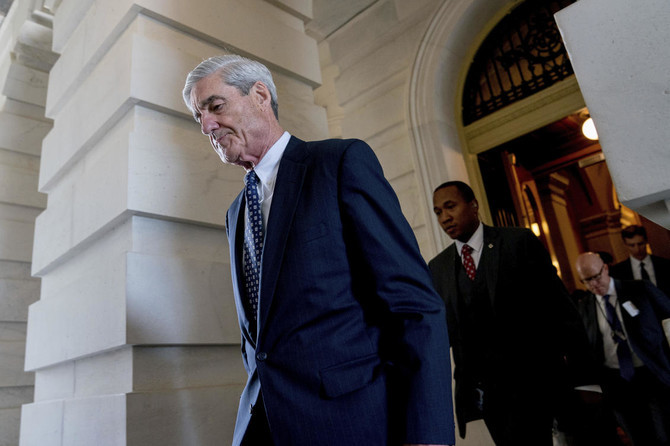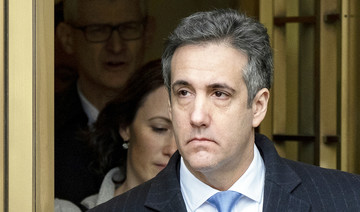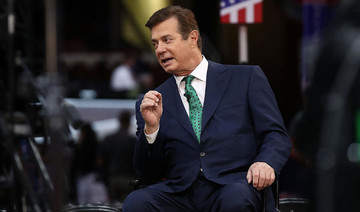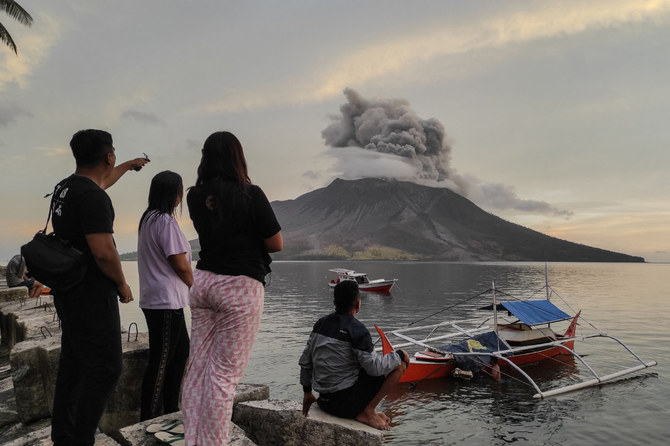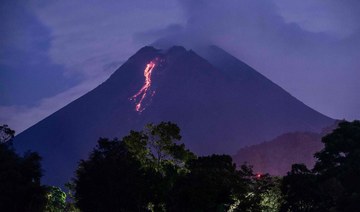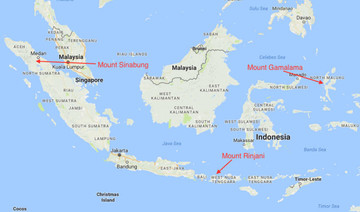WASHINGTON: Special Counsel Robert Mueller’s office on Friday disputed a report in BuzzFeed News that President Donald Trump’s former lawyer Michael Cohen said Trump directed him to lie to Congress.
BuzzFeed, citing two unnamed law enforcement sources, said Cohen, who is going to prison for lying to Congress, told investigators working for Mueller that Trump had directed him to lie about efforts to build a skyscraper in Moscow while he was running for president.
“BuzzFeed’s description of specific statements to the Special Counsel’s Office, and characterization of documents and testimony obtained by this office, regarding Michael Cohen’s Congressional testimony are not accurate,” Peter Carr, a spokesman for Mueller’s office, said in a rare statement from the special counsel.
While Mueller’s spokesman stopped short of declaring the article false in its entirety, he disputed portions of the story that appear to go to the heart of the allegations made against Trump.
It was the first time Mueller has commented about a news article concerning his probe of Russia’s meddling in the 2016 presidential election.
BuzzFeed editor-in-chief Ben Smith said in a statement: “We stand by the reporting and the sources who informed it, and we urge the Special Counsel to make clear what he’s disputing.”
After the BuzzFeed report was published on Thursday night, investigators in the US Senate and House of Representatives said they plan to examine the allegations in the report.
Leading Democrats in the House said they would seek to verify the story, saying that if true it would be evidence of criminal activity by the president.
Earlier on Friday, the White House said the story was false. “Look, that’s absolutely ridiculous,” spokeswoman Sarah Sanders told reporters.
David Weinstein, a former federal prosecutor, said it was “exceedingly rare” for Mueller to comment on a news report, highlighting the significance of the allegations made in the BuzzFeed article and the attention it was getting in the media and among lawmakers.
“They are making a public comment to tell everyone to calm down,” Weinstein said. “He doesn’t want people to think his silence is confirming the truthfulness of the report.”
BuzzFeed said Mueller’s office learned of Trump’s instructions to Cohen through internal Trump Organization emails, witness interviews, text messages and other documents, and that Cohen told prosecutors about the directive in an interview.
Trump said on Twitter that Cohen was lying in order to get less prison time. Trump’s lawyer, Rudy Giuliani, said in a statement that any suggestion that Trump told Cohen to lie is “categorically false.”
Representatives for the Trump Organization did not respond to a request for comment on the BuzzFeed report.
Cohen, who once said he was so loyal to Trump that he would “take a bullet” for him, is scheduled to begin a three-year prison sentence in March after pleading guilty to charges including campaign finance violations, tax evasion and lying to Congress.
If Trump did tell Cohen to lie, that would constitute criminal activity, said House Judiciary Committee Chairman Jerrold Nadler, a Democrat, who said he would look into the matter.
“Directing a subordinate to lie to Congress is a federal crime,” Nadler said on Twitter.
House Intelligence Committee Chairman Adam Schiff said the allegation that Trump may have directed Cohen to lie under oath “is among the most serious to date.”
“We will do what’s necessary to find out if it’s true,” Schiff, also a Democrat, said on Twitter.
Some Senate Intelligence Committee investigators hope to ask Cohen about the BuzzFeed report when he testifies behind closed doors in February, a committee source told Reuters.
He also will face questions about it in testimony before the House Oversight Committee on Feb. 7.
“SEISMIC EVENT“
Legal experts say the allegation exposed Trump to a new level of risk in an investigation that has already resulted in convictions of or guilty pleas from four former campaign aides, including former campaign chairman Paul Manafort.
“It’s a seismic event,” Andy Wright, an associate White House counsel under former Democratic President Barack Obama, told Reuters.
Cohen, his left arm in a sling, did not comment as he entered his apartment building in New York on Friday. His adviser, Lanny Davis, also declined to comment to Reuters, and his lawyer, Guy Petrillo, did not respond to a request for comment.
Trump denounced Cohen as a “rat” after he began cooperating with investigators while Cohen, whose duties included making payoffs to two women who said they had affairs with Trump, said on Thursday he regretted giving “my blind loyalty to a man who doesn’t deserve it.”
Directing or encouraging someone to lie under oath is a crime known as subornation of perjury. The report also raises questions about obstruction of justice and conspiracy.
William Barr, Trump’s nominee to be attorney general, said at his confirmation hearing on Tuesday that a president would be committing obstruction if he directed a subordinate to lie under oath. A Justice Department spokeswoman declined to comment.
While the Justice Department has previously concluded that a sitting president cannot be charged while in office, such an allegation, if found true, could fuel impeachment proceedings in Congress.
Trump repeatedly has denied collusion with Russia and slammed Mueller’s investigation as a “witch hunt.” Russia also has rejected US intelligence findings that Moscow interfered in US politics in the 2016 election in an effort to boost Trump.
Trump said during the presidential campaign that he had no ties or business dealings with Russia.
Democrats, who took over the US House of Representatives this month, have generally been cautious regarding any talk of impeachment to remove Trump from office although some rank-and-file members have pushed for such a resolution.
Impeachment proceedings would face an uphill battle in the Senate, where Trump’s fellow Republicans have a majority.
BuzzFeed also reported that Cohen regularly updated Trump’s son Donald Trump Jr. and his daughter Ivanka Trump, who is now a top White House adviser, about the Moscow project.
A spokesman for Abbe Lowell, a lawyer for Ivanka Trump, said she was minimally involved in the development. Trump Jr., who has also testified previously before Congress, in a Twitter post called the BuzzFeed report “fake news.”


